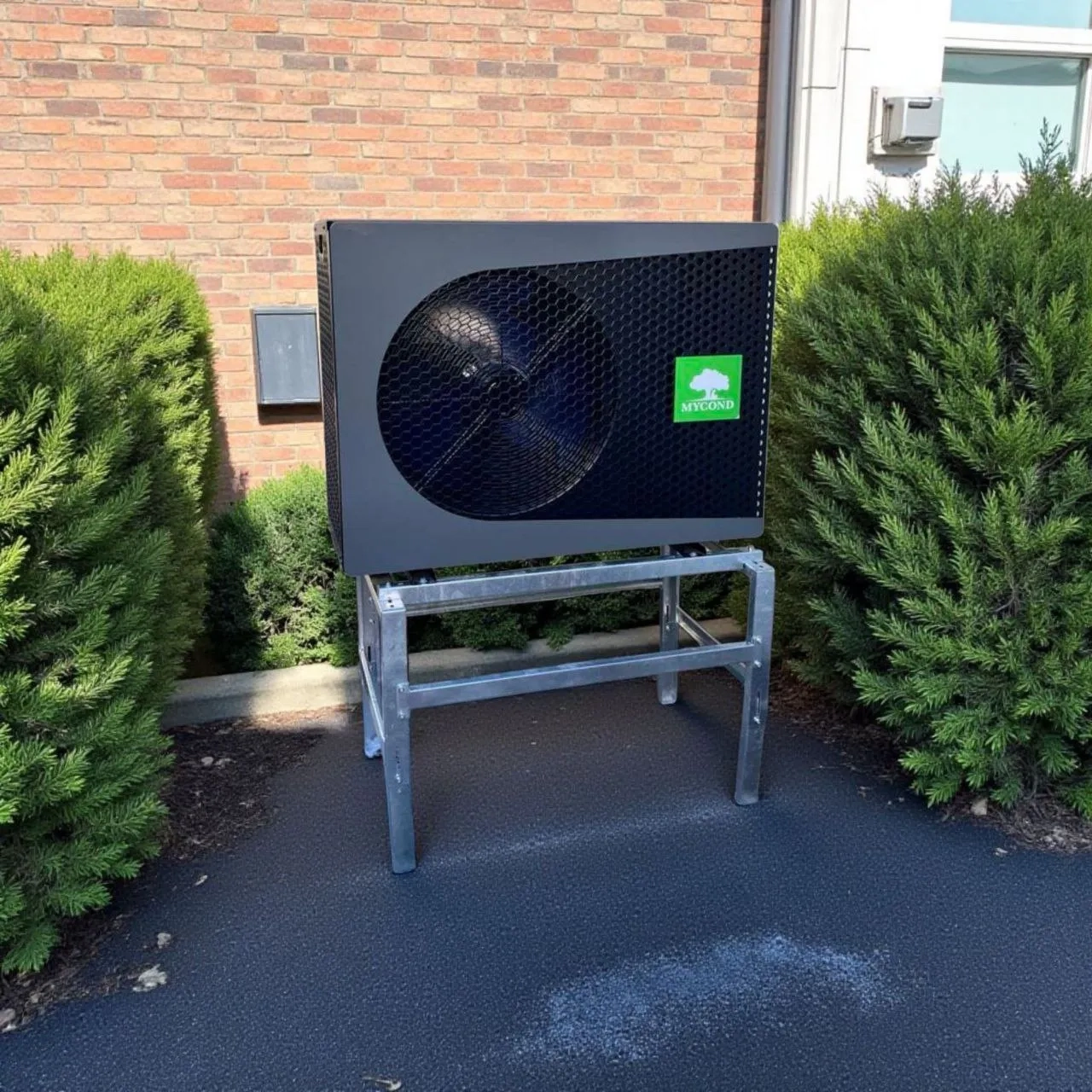
A homeowner in Manchester, Glasgow or London often faces a difficult choice: how to heat the home and provide hot water efficiently with minimal running costs? A heat pump has become the most popular solution, but which system should you choose from the dozens of brands and models on the market? Which type of heat pump is most efficient — air-to-water, ground-to-water or water-to-water? Which brand is the most reliable, and what capacity is optimal for a specific home?
Questions about the water temperature delivered by a heat pump (critical for homes with older radiators) and why the monoblock has become the most widespread type on the market are particularly relevant. Despite the variety of options, there are clear criteria for a well-reasoned choice: SCOP (Seasonal Coefficient of Performance), reliability of key components (primarily the compressor), operating temperature range and ease of installation.
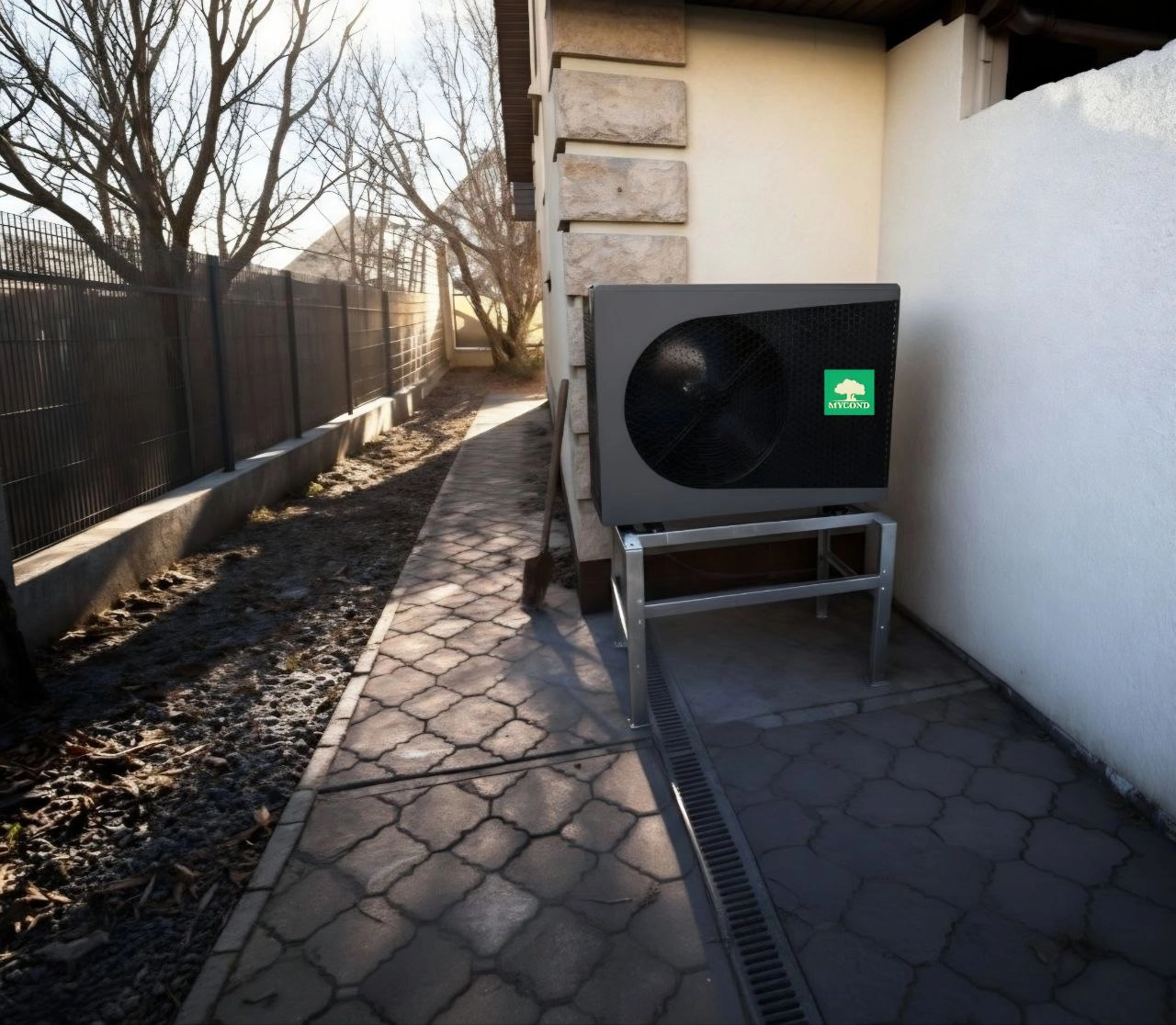
How heat pumps work: types and efficiency
There are several types of heat pumps today, but air-to-water systems remain the most popular, accounting for over 70% of the European market. The reasons are an optimal balance between price and efficiency and no need for complex groundworks.
Air-to-water systems are divided into two subtypes:
- Split systems — consist of an outdoor and an indoor unit connected by refrigerant lines
- Monoblocks — all components are integrated in a single outdoor unit that connects to the heating system with water pipes only
Geothermal ground-to-water systems deliver a higher SCOP (5–6), but their installation is 3–4 times more expensive due to the need for drilling boreholes or laying ground loops. Water-to-water systems require a natural water source (a well or a lake) and are used relatively rarely.
A monoblock heat pump has a number of advantages compared with split systems:
- No refrigerant lines simplifies installation (no certified refrigeration specialist required)
- Lower risk of refrigerant leakage
- All components are protected in a single housing, increasing reliability
- Simple hydraulic connection with Ø25–32 mm pipes enables quick commissioning
The key efficiency parameter of a heat pump is SCOP (Seasonal Coefficient of Performance). This shows how many kilowatts of heat the pump produces per 1 kW of electricity consumed over the heating season. With a SCOP of 4.5 the system generates 4.5 kW of heat for each kW of electricity, delivering 55–60% savings versus an electric boiler. Energy efficiency class A+++ corresponds to a SCOP of 4.5 and above.
Pay particular attention to the presence of EVI technology (Enhanced Vapor Injection), which significantly increases compressor performance at low temperatures (-15/-25°C), when conventional heat pumps lose efficiency. The leaders in producing EVI compressors are Panasonic and Copeland.
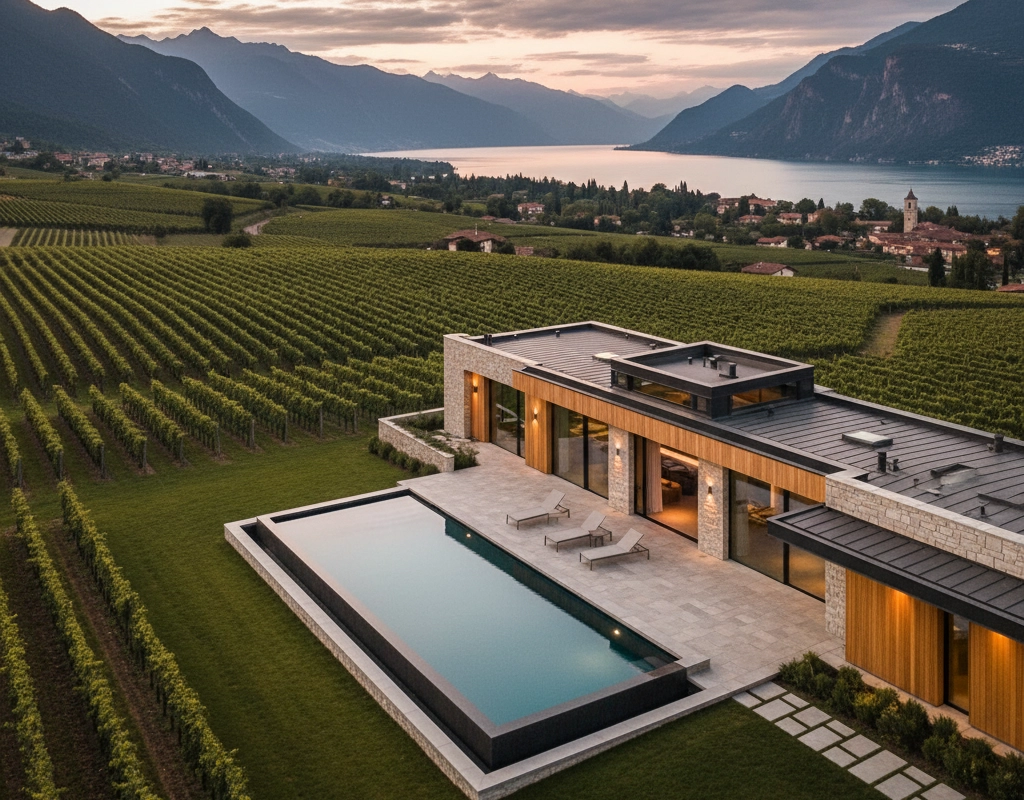
Choosing a heat pump: a checklist of parameters
When selecting the most efficient and reliable heat pump, focus on several key criteria:
Efficiency
SCOP (seasonal coefficient): For the UK climate, a value from 4.0 and above is optimal. A+++ corresponds to SCOP from 4.5. For systems with underfloor heating (W35) SCOP is typically higher, while for radiator systems (W55) values of 3.2–3.5 are sufficient.
COP at different temperatures: Check COP at -7°C and -15°C, as these are typical temperatures for many days of the heating season in Britain. If the COP at -15°C is below 2.5, the heat pump will be inefficient on cold days.
Reliability
Compressor: Favour units with Panasonic, Copeland or Hitachi compressors featuring EVI technology. Such compressors come with 5–7 year warranties and have been tested at extreme temperatures. Avoid no‑name solutions.
Heat Pump Keymark certification: This is an EU international standard (EN 14825:2022) that confirms the declared performance of the pump through independent testing of SCOP, noise level and reliability.
Protection functions: Ensure there is protection against freezing, overheating, high/low refrigerant pressure and automatic restart after a power outage.
Capacity
Capacity calculation: As a rule of thumb, you need 1 kW per 10 m² of an insulated home. For a 150 m² house, an output of around 15 kW is optimal. Consider heat losses (U‑values for walls, windows, roof), the minimum winter temperature in your region and add a 20–30% margin for older or uninsulated homes.
Operating range: For British climatic conditions, stable operation down to -20°C is critical.
Flow temperature
W35 (35°C): Optimal for underfloor heating systems and fan coils; delivers a higher SCOP.
W55 (55–60°C): Necessary for retrofitting older radiator systems, allowing you to avoid replacing the entire heating system.
Refrigerant
R32: More environmentally friendly (GWP 675 versus R410A at 2088) and around 10% more efficient. The current industry standard.
R290 (propane): A promising refrigerant with a very low GWP (3), but less common for now.
Additional factors
Noise level: Optimal values are 48–55 dB(A) at a distance of 1 m; a quiet mode is important for residential areas.
Control: Wi‑Fi support (mobile app), Modbus (smart home integration) and weather‑compensated control are desirable.
Warranty: Check the terms with the official dealer.
Mycond BeeThermic models: technical specifications
The Mycond BeeThermic series offers an optimal combination of all key selection criteria for a heat pump: monoblock construction, Panasonic EVI compressor, high SCOP 4.47–4.58 (A+++ class), Heat Pump Keymark certification and verified operation down to -25°C.
| Model | Heating capacity (kW) | Cooling capacity (kW) | SCOP W35/W55 | Energy efficiency class | Noise dB(A) at 1 m | House area (m²) | Operating temperature (°C) |
|---|---|---|---|---|---|---|---|
| MHCM 06 SU1A | 6.5 | 5.0 | 4.58/3.23 | A+++/A++ | 49/48 | up to 65 | down to -25 |
| MHCM 10 SU1A | 10.6 | 8.5 | 4.47/3.24 | A+++/A++ | 52/50 | up to 105 | down to -25 |
| MHCM 14 SU3A | 14.8 | 12.0 | - | A+++/A++ | 54 | up to 150 | down to -25 |
| MHCM 18 SU3A | 18.8 | 20.4 | 4.53/3.28 | A+++/A++ | 55 | up to 190 | down to -25 |
| MHCM 24 SU3A | 24.0 | 21.34 | - | A+++/A++ | 58 | up to 240 | down to -25 |
Key advantages of the Mycond BeeThermic models:
Reliability
- Panasonic compressor with EVI technology: Tested at -25°C with an outlet water temperature of +50°C and demonstrated stable operation for over an hour without errors (documented in the technical manual).
- Heat Pump Keymark 2024 certification: Compliance with European standards EN 14825:2022 and EN 14511-4:2022 guarantees the stated performance.
- Safety systems: Automatic recovery after a power outage (after 3 minutes), frost protection, overheat and overload protection, plus self‑diagnostics.
Efficiency
- SCOP 4.47–4.58 for W35 (A+++ class): The system delivers 4.5 kW of heat per 1 kW of electricity, saving 55–60% versus an electric boiler and 40–50% versus a gas boiler.
- SCOP 3.23–3.28 for W55 (A++ class): Sufficient efficiency for retrofitting older radiator systems without replacing them.
- R32 refrigerant: About 10% more efficient than R410A with a lower climate impact (GWP 675).
- Minimal standby consumption: Only 0.008–0.015 kW.
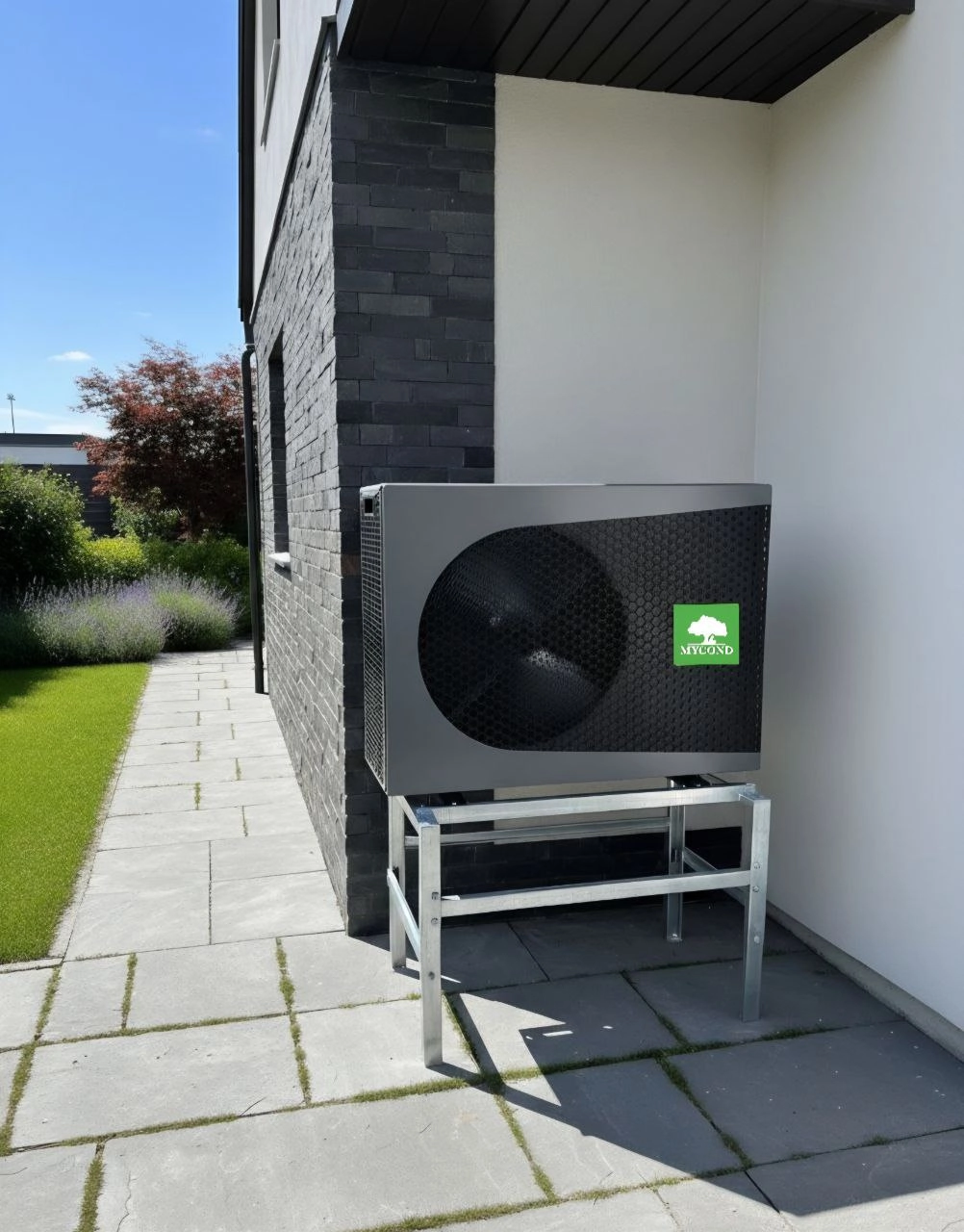
Why choose BeeThermic: an evidence-based choice
BeeThermic is the optimal solution for homeowners in the UK who are looking for:
- The most reliable heat pump: Panasonic EVI compressor, Heat Pump Keymark certification and verified tests at -25°C ensure faultless operation even in the harshest conditions.
- The most efficient heat pump: SCOP 4.47–4.58 (A+++) delivers savings of up to 60% compared with an electric boiler.
- Easy installation: Monoblock design with no refrigerant piping allows installation in 1 day.
- Retrofit of existing heating: Flow temperatures up to 60°C (W55) mean you can keep existing radiators.
- Reliable operation at low temperatures: Proven stability at -25°C with outlet water temperature of +50°C.
- Year-round comfort: Cooling mode in summer with output up to 20.4 kW (MHCM 18 SU3A).
- Domestic hot water: Built‑in DHW mode with anti‑legionella function.
- Convenient control: Mycond app with Wi‑Fi and Modbus support.
Consider alternatives in the following cases:
- For very large properties over 300 m² — cascade connection of two BeeThermic systems or use of the MHCM 24 SU3A model may be appropriate.
- With regular extreme low temperatures below -30°C — combine the heat pump with an additional heat source (electric or gas).
- With a limited budget — basic models without EVI can be considered, but with lower efficiency at sub‑zero temperatures.
Installation and operation
Installing a BeeThermic monoblock heat pump involves several simple steps:
- Outdoor unit installation: Mount on a plinth or brackets at least 30 cm from the wall to ensure proper ventilation.
- Hydraulic connection: Ø25–32 mm pipes (flow/return) connect the pump to the heating system and the DHW tank.
- Electrical connection: Depending on the model — 380 V 3‑phase, protective circuit breaker, proper earthing.
- Commissioning: Weather‑compensated curve (adapting flow temperature to outdoor temperature), operating schedule, quiet mode for night‑time.
Installation typically takes 1 working day for an experienced team.
Operational features:
- Minimal standby consumption: 0.008–0.015 kW (approximately 2–3 pounds per year).
- Automatic protection systems: Start‑up when water temperature falls below 5°C to prevent freezing, overheat protection and refrigerant pressure control.
- Remote monitoring: The Mycond app allows you to control temperature, energy consumption and error codes.
- Servicing: An annual check is recommended, including inspection of filters and heat exchangers, refrigerant pressure control and verification of electrical connections.
- Self‑diagnostics: The system displays error codes (E01, E02, etc.) with detailed descriptions in the technical manual.
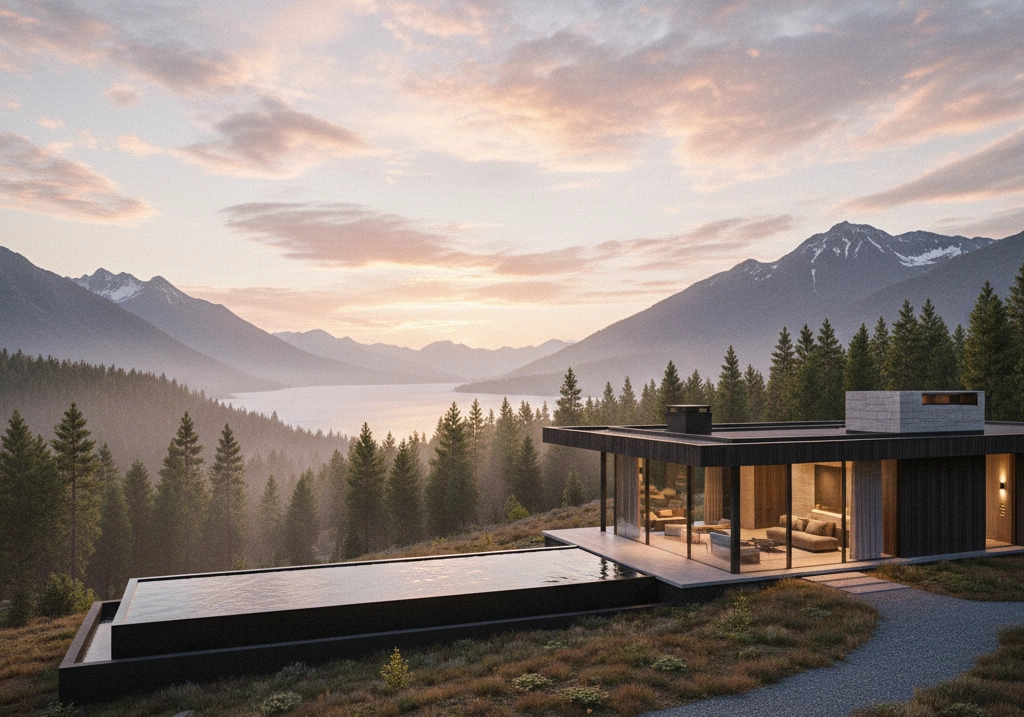
Frequently asked questions about heat pumps
Which type of heat pump is the most efficient?
Air-to-water systems (like BeeThermic) offer the best balance of price and efficiency. A SCOP of 4.5+ means that for 1 kW of electricity, 4.5 kW of heat is produced, delivering 55–60% savings versus an electric boiler. Geothermal ground-to-water systems have a higher SCOP (5–6), but installation is 3–4 times more expensive due to the drilling required. Monoblocks are more efficient than split systems due to the lack of heat losses in refrigerant lines and fewer installation errors.
Which brand of heat pump is the most reliable?
Look for systems with compressors from Panasonic, Copeland or Hitachi with EVI technology and Heat Pump Keymark certification. BeeThermic uses a Panasonic EVI compressor, tested at -25°C with a water flow temperature of +50°C, with documented stable operation. The Heat Pump Keymark certificate (EN 14825:2022) guarantees that declared characteristics match independent test results.
What capacity heat pump do I need to heat my home?
As a rule of thumb, you need around 1 kW per 10 m² of an insulated home according to European practice. For a 150 m² house, a model with around 15 kW output (MHCM 14 SU3A) is suitable. The exact calculation should consider heat losses through walls/windows/roof (U‑value W/m²·K), the minimum winter temperature in your region and desired indoor temperature. For older or uninsulated homes, an additional 20–30% margin is recommended.
What flow temperatures can a heat pump deliver?
The temperature depends on the operating mode. W35 (35°C) is optimal for underfloor heating and fan coils, delivering SCOP 4.5–5.0. W55 (55–60°C) suits older radiator systems with SCOP 3.2–3.5, enabling a retrofit without replacing radiators. BeeThermic operates in both modes, allowing you to combine radiators (W55) on the first floor with underfloor heating (W35) on the second. In extreme frosts below -20°C, you can use an electric immersion heater in the DHW tank as an auxiliary heat source.
Why has the monoblock become the most common type of heat pump?
According to EHPA 2023–2024, monoblocks account for over 70% of the EU market. The main reasons are:
- Simple installation — no refrigerant lines (no certified refrigeration specialist required)
- Lower risk of refrigerant leakage — all components are in one housing
- Cheaper installation — can be installed in 1 day
- Higher reliability — protected components in the outdoor unit
A split system requires refrigerant piping, evacuation and charging, which complicates and increases installation costs and raises the risk of errors.
Does a heat pump work efficiently in severe frost?
Yes, if the pump is equipped with EVI (Enhanced Vapor Injection) technology. BeeThermic has been tested at -25°C with a water flow temperature of +50°C and demonstrated stable operation without errors. The Panasonic EVI compressor increases performance at low temperatures by 20–30% compared with conventional compressors. For extreme frosts of -25/-30°C, an additional heat source (electric immersion heater in the DHW tank) is recommended.
How much more economical is a heat pump compared to a gas or electric boiler?
With a SCOP of 4.5, savings are 40–50% versus a gas boiler (depending on tariffs) and 55–65% versus an electric boiler. For a 150 m² home with an annual heat demand of 15,000 kWh, an electric boiler (99% efficiency) will consume about 15,150 kWh of electricity. BeeThermic (SCOP 4.5) will use only 3,333 kWh — 4.5 times less. The precise monetary saving depends on local tariffs.
Take a step towards energy efficiency with Mycond BeeThermic
Looking for the most reliable and efficient monoblock heat pump for your home in London, Manchester, Birmingham or elsewhere in the UK? Mycond BeeThermic is a proven solution with a Panasonic EVI compressor (tested at -25°C), Heat Pump Keymark certification and SCOP up to 4.58 (A+++ class).
Gain savings of up to 60% compared with an electric boiler, fast one‑day installation and a comprehensive solution for heating, cooling and domestic hot water in a single unit.
- Download the BeeThermic technical documentation with full SCOP data, installation diagrams and certificates
- Calculate the optimal capacity for your home using an online calculator that accounts for heat losses
- Contact the authorised Mycond dealer in your region to get an engineer’s consultation and a turnkey installation proposal
Have questions about model selection or installation specifics? Write to us in the chat — our engineers will help select the optimal configuration for your home and climate.